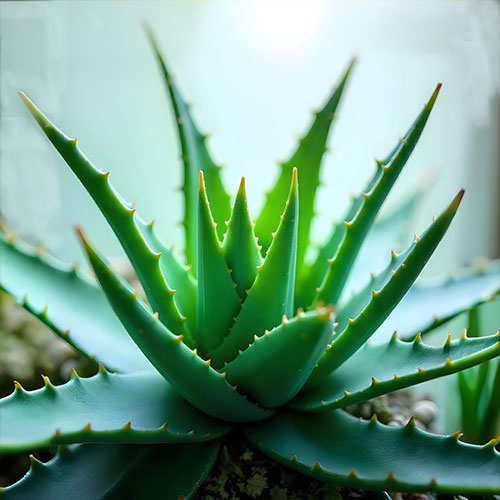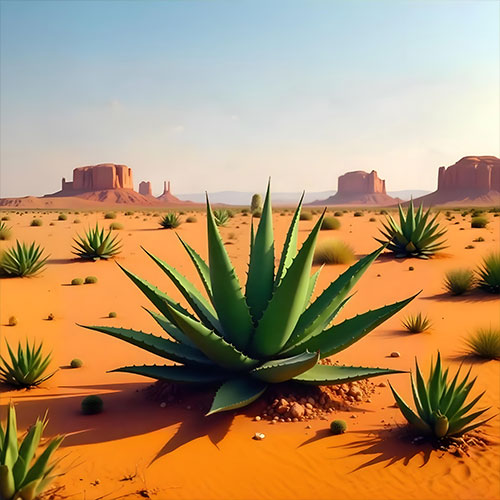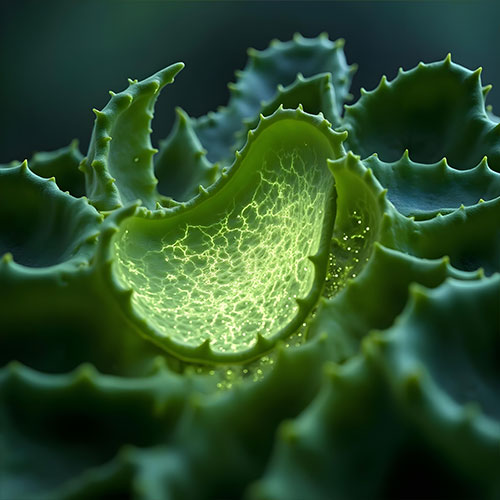






Aloe vera, affectionately known as Kumari in ancient texts, is a botanical marvel with a history that stretches back millennia. From sacred scriptures to modern scientific studies, Kumari has captivated generations with its healing abilities and unique properties. In this blog, we journey into the mystical world of Kumari, exploring its historical significance, intricate morphology, vibrant varieties, and the magic it holds within. Prepare to uncover the mysteries behind this timeless plant that has enchanted cultures across the globe.
Aloe vera, or Kumari as it is revered in many ancient texts, has long been a cornerstone of traditional knowledge and natural healing. Its story stretches far beyond modern use, intertwining with centuries of wisdom from various cultures. Ancient scriptures, such as the Paniniya Grihya Sutras and Kaiyadeva Nighantu, mention Kumari as a vital medicinal herb. The legacy of Aloe vera as a healer spans thousands of years, from the deserts of Arabia to the lush valleys of India, where it has been used to treat ailments and promote health. The plant's ability to survive and flourish in harsh climates has made it a symbol of endurance and vitality, making its place in history undeniable.
Kumari is a true marvel of nature, designed with incredible precision to thrive in tough environments. Its glaucous leaves, marked by a unique blue-gray hue, are dotted with spines that provide protection against the elements. The thick, fleshy leaves house a golden, gel-filled pulp, which is known for its cooling and healing properties. Beneath its tough exterior lies a treasure trove of therapeutic compounds, making it not only an aesthetically striking plant but also a masterpiece of botanical engineering. From its distinct shape to its internal structure, every aspect of Aloe vera is perfectly designed to offer both beauty and function.
Kumari’s influence spans continents, and its varieties offer diverse therapeutic and cosmetic benefits. From the Caribbean’s Curacao Aloe to the Cape Aloe found in South Africa, each variety brings its own unique characteristics and advantages. The Socotrina Aloe, known for its potency, thrives in the arid regions of the Arabian Peninsula, while the Zanzibar Aloe flourishes in the tropical climates of East Africa. Each variety of Aloe vera contains different concentrations of active compounds, making them suited for a variety of uses, from skincare to digestive health. This diversity in Aloe’s varieties highlights its global significance and its ability to cater to a wide range of therapeutic needs.
Kumari's bloom is a spectacle of nature, as the plant comes alive in vibrant colours. The sight of Aloe vera’s vivid orange and yellow flowers is a testament to its resilience and vitality. In its native habitats, the plant blooms in winter, offering a burst of colour and life during the colder months. In the majestic foothills of the Himalayas, Aloe vera thrives in dry valleys, adding to the landscape's beauty with its golden flowers. This time-lapse phenomenon reveals the plant's adaptability and its ability to bloom in the most unexpected of environments. Whether in the wilds of the Himalayas or in the dry desert regions, Kumari’s flowering glory serves as a reminder of its enduring beauty and strength.
Inside the heart of Kumari lies its true magic. Rich in aloin, aloe-emodin, and mucopolysaccharides, Aloe vera offers a range of therapeutic benefits that have made it a staple in natural medicine. Aloin, known for its anti-inflammatory properties, helps soothe and heal, while aloe-emodin serves as an effective antimicrobial agent. Mucopolysaccharides, the key components of Aloe vera gel, help moisturize, heal wounds, and promote skin regeneration. The dynamic interaction of these compounds creates a powerful blend that supports everything from skin health to digestive well-being. The true magic of Kumari lies within its cells, where each compound works in harmony to deliver natural healing properties that have stood the test of time.
Kumari, the Aloe vera plant, continues to be a source of wonder and fascination. From its rich historical mentions to its stunning morphology and vibrant varieties, it’s clear that this plant has earned its place as one of nature’s most revered treasures. With its flowering glory and the therapeutic magic found in its inner composition, Kumari is not only a gift from nature but also a reminder of the resilience and beauty inherent in all living things. As we continue to explore the mystical world of Kumari, we uncover the endless possibilities this botanical wonder holds for healing and rejuvenation.